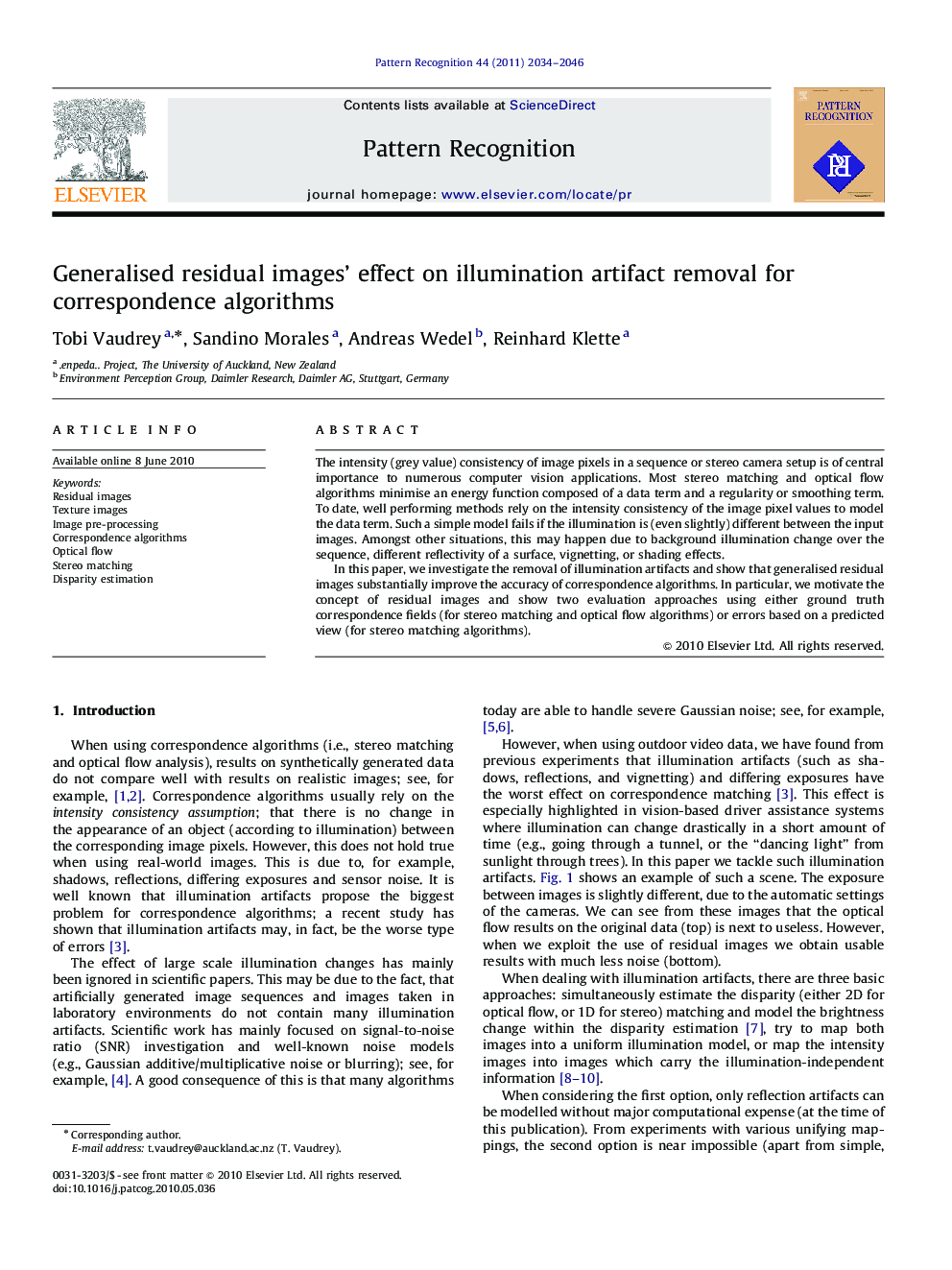| Article ID | Journal | Published Year | Pages | File Type |
|---|---|---|---|---|
| 531232 | Pattern Recognition | 2011 | 13 Pages |
The intensity (grey value) consistency of image pixels in a sequence or stereo camera setup is of central importance to numerous computer vision applications. Most stereo matching and optical flow algorithms minimise an energy function composed of a data term and a regularity or smoothing term. To date, well performing methods rely on the intensity consistency of the image pixel values to model the data term. Such a simple model fails if the illumination is (even slightly) different between the input images. Amongst other situations, this may happen due to background illumination change over the sequence, different reflectivity of a surface, vignetting, or shading effects.In this paper, we investigate the removal of illumination artifacts and show that generalised residual images substantially improve the accuracy of correspondence algorithms. In particular, we motivate the concept of residual images and show two evaluation approaches using either ground truth correspondence fields (for stereo matching and optical flow algorithms) or errors based on a predicted view (for stereo matching algorithms).
